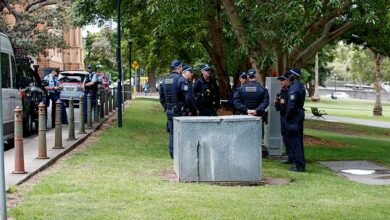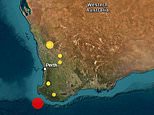The Surprising Way Osteoporosis Can Make You Feel Sick, Reveals DR MARTIN SCURR… And Whether Diet Can REALLY Help

I was recently diagnosed with osteoporosis in my lower back and my GP prescribed me alendronate. I took it for a month but stopped because of the side effects. Now I only take vitamin D and magnesium, eat a diet rich in calcium and do weight bearing exercises. Is this enough?
Eleonora Edward, Swansea.
Lifestyle measures alone are unlikely to have enough impact. Bone is always reabsorbed and regenerated, but in osteoporosis, bone is broken down faster than it is replaced.
Alendronic acid belongs to a group of medicines called bisphosphonates. These medicines slow down the breakdown of bone.

Alendronic acid should be taken in the morning on an empty stomach with at least 200 ml of water. It is essential that you avoid food and remain upright for another half hour (photo posed by model)
However, alendronic acid can have unpleasant side effects, including oesophagitis – pain in the gullet (oesophagus) which can make it difficult to swallow food. Therefore, the tablets should be taken in the morning on an empty stomach with at least 200ml of water. It is essential that you avoid food and remain upright for at least half an hour. This reduces the risk of stomach acid leaking back into the gullet with the medicine, which can cause oesophagitis.
Another bisphosphonate, ibandronic acid, is taken as a monthly tablet (alendronic acid is taken weekly) and is less likely to cause stomach upset.
If this also causes problems, another option is an intravenous infusion of zoledronic acid. This is given only once a year and because it goes straight into the bloodstream, there are no gastrointestinal side effects.
An alternative to bisphosphonates is denosumab. This drug works in a similar way, but is injected once every six months.
Your GP can refer you to an osteoporosis clinic for this. Waiting times can be considerable, so in the meantime continue to do weight-bearing exercises and eat a calcium-rich diet.
For the past two years I have had terrible pains in the calf muscle of my left leg when standing or walking, even short distances. I have had triple bypass surgery using veins from that area – could that be the cause?
Name and address will be provided.
Let me reassure you: removing a vein from your leg to create the vascular bypass needed for your surgery is not the cause of the pain.
In your longer letter you write that a doctor has told you that the arteries in your leg need to be examined to check for circulation problems.
If this is indeed the cause, then it is due to the arteries that supply the muscle with blood, and not the veins (such as the vein removed during bypass surgery) that drain the blood.
Cramp-like pain in the muscles during exercise, which is only relieved by rest, is also called intermittent claudication.
It is the result of reduced blood flow to the muscle due to clogged arteries. It is similar to the chest pain people experience with angina pectoris due to reduced blood flow to the heart.
The strange thing is that in your longer letter you mention that you have already had a Doppler ultrasound to measure blood flow in the affected leg, but that no evidence of circulatory problems was found.
To further complicate matters, you have a history of sciatica in both legs, causing you to experience similar pain symptoms.
All of this suggests that the cause is a pinched nerve or nerves, possibly due to a degenerative problem in the spine, such as worn discs or even spinal stenosis (where the space around your spinal cord narrows). This can happen with age. I would recommend speaking to your GP about tests such as scans to determine the cause.




